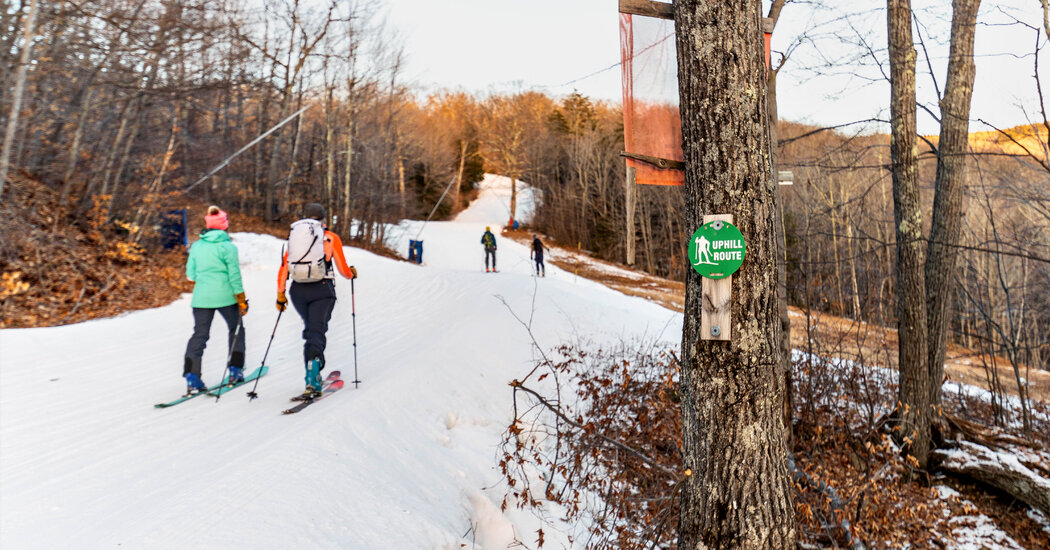Early last February, at the Mount Washington Backcountry Ski Festival in New Hampshire, the organizers faced an increasingly common problem: Terrible snow.
Four days of temperatures over 40 degrees combined with an already shallow snowpack had rendered many backcountry ski zones unskiable. Up on Mount Washington, where the higher elevations usually mean colder temperatures, what had been soft, wet snow had hardened into ice when the temperature dropped in the late morning.
Corey Fitzgerald, 36, the owner of Northeast Mountaineering in Glen, N.H., who was supposed to photograph a backcountry tour group on the festival’s third day, headed to an area called Gulf of Slides to check out the conditions. He skied into one of the slides ahead of the group and found that “it was just bulletproof,” or so icy that his skis just bounced off the surface, Mr. Fitzgerald said.
“I thought people were just going to fall down the gully. And the snow was so low that there was an ice bulge still visible in the middle.”
One by one, each skier edged their way down the icy slope, but it was far from the best ski run of their lives.
Alpine ski touring, as the sport is known, involves climbing up mountains using special equipment, then skiing down, and it has been booming. There was a 16 percent increase in the total number of people who participated in ski touring nationwide during the 2022-23 ski season compared to the previous year, according to Snowsports Industries Americas, a winter outdoor industry trade association. New Englanders accounted for nearly 4 percent of the total number of skiers, according to the group’s participation study.
The surge can largely be attributed to gear advancements like lighter skis and split snowboards, to which skiers attach “skins” that grip the snow and allow them to climb. Special bindings let skiers’ and riders’ heels stay free for climbing, then lock into place for descents.
Add in the rising cost of lift tickets at resorts and an increased desire for solitude fueled by the pandemic, and you get a spike in interest.
At the same time, especially in the Northeast, winters are getting shorter; more “weather whiplash” events, where rapid swings in temperature result in the thawing and refreezing of the snowpack, are occurring; and natural snow is becoming less reliable. A study published in a 2021 issue of the journal Northeastern Naturalist concluded that Mount Washington’s snow season has decreased by 1.7 days per…
Click Here to Read the Full Original Article at NYT > Travel…
